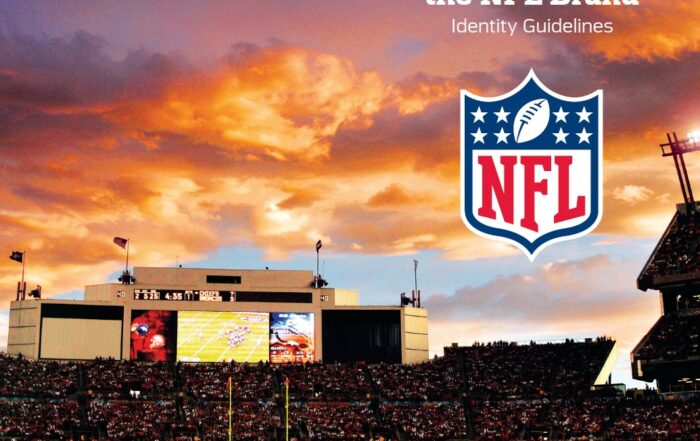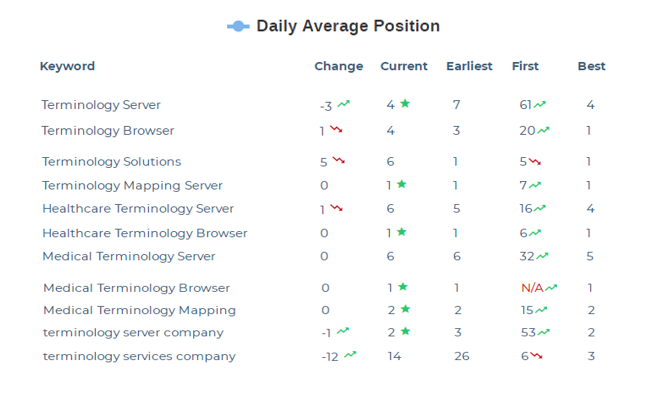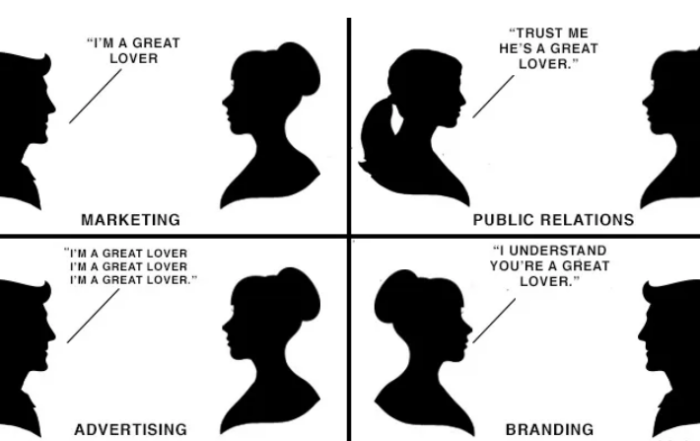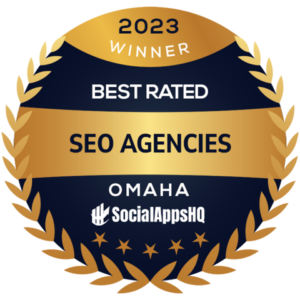
St. Louis Arch | St. Louis, Missouri | 2016 – Social media is one piece of an overall marketing strategy mix, just like each of these stainless steel panels comprise the Arch.
We’ve taught social media classes at the Mayo Clinic and locally in Omaha for Metro Community College.
We’ve worked on social media strategy with national brands like Old Spice and Omaha brands like the Omaha Beef. We know the intricacies of each social media platform and have executed proven successful strategies in multiple markets and every conceivable demographic target.
The term “social media” used to pertain specifically to Facebook, the same way a “U-Haul” is a catch-all term for truck rental or how “Kleenex” means tissue. Or if you go to the American South, “Coke” means pop or soda.
In each case, an individual brand grew so big and had so much success, the brand awareness overtook the general product awareness.
Facebook made social media popular. And from that, it paved the way for all of the platforms that intersect with our daily lives.
So, how did we get here?
Social Media – Evolution of Publishing
How did social media come to be so important? For years, print was dominant and arrogant which is what led to its continued slow death.
Let’s go back in time – 20 years ago the only way to get published was to pitch to a publishing company, organization, etc. or self-publish. You were at the mercy of agents, publishing houses, boards.
The old guard has been forced to evolve. And the ones that don’t, die – it is that simple. The middle man has been cut out.
Newspapers, phone book, and print advertising are all going the way of the dinosaur and have become ancillary pieces of an overall content marketing strategy, at best.
The death of print advertising coincides with, and is spurred on by, the continuing rise, accessibility, and usage of mobile internet (50%+ of ALL internet searches).
The two largest referral sources for Internet traffic are Google and Facebook, and they alternate between #1 and #2 with each passing month.
Google, Facebook, Microsoft, Apple, Amazon, and Netflix generate almost 57% of Internet traffic – more than everyone else, combined.
Social Media Marketing is the New Word of Mouth
Part of the reason print has died is because the Internet and social media changed way we consume content. The expectations of how content is delivered changed thanks to both.
People no longer wait for the content to show up (the daily newspaper, the 5, 6 or 10 o’clock news, etc.) – they want it when they want it, when it is convenient. And publishers have been forced to adapt.
As an advertiser, it is important to know how your campaigns are performing.
With print, radio, TV, you never had any idea, just a specific range based on the shotgun approach of saturating a specific demographic market at a specific time.
With social media platforms like Facebook, Instagram, Twitter, YouTube, and LinkedIn, and with help from other tools like Google Analytics, you know in real-time how a campaign is performing, down to specific users, based on analytical data.
Social media is agile and adaptable and is there for your potential customers when it is convenient for them.
Social Media – What’s the Point and Why Should I Care?
Social media individualized and categorized the greater Internet. Think of the various social media platforms as a resource for news and knowledge that has made the world smaller, closer.
Not having a dog in the fight, not participating, means missed opportunities for “the brand of YOU” or your business.
Here’s a question we ask all of our clients: When was the last time you Googled yourself?
Do you have ANY idea how you’re appearing to potential customers, jilted ex-lovers, your boss, your neighbor, your kids, your competitors?
Social media and SEO allow you to guide the content that appears and control your public image.
Social Media Misconceptions
- It isn’t just for kids or millennials.
- It doesn’t have to be self-serving.
- It doesn’t have to have shock value or be “click bait.”
- Assume everyone sees everything you publish – what would your mom/child/boss say?
- Don’t post when you’re angry!
- Create content based on platform & audience
- Social media platforms are NOT diaries – “I only use Facebook for recommendations and the airing of private personal grievances.”
What is Content?
It’s not just a catch-all buzzword, the way Google uses “high-quality content.” Think of content as a deliverable.
When Should I Post?
We think the ideal time to post content is when your business or brand page’s audience is online. Use the Facebook Insights tab to see when this is for you. This is without a doubt the the most important and underutilized data FB offers and the #1 thing for business page admins to be aware of.
Facebook is not your “friend.” See what I did there? It is an unabashed marketing platform at this point in its evolution.
Instagram, which Facebook purchased for a billion dollars, hasn’t fully evolved that way yet but you can see and feel the difference from prior to Facebook ownership. Different platforms have different posting styles that work better than others.
For example, Instagram is an image based platform. Sharing a link to a website won’t work as well as it will on Facebook, Twitter, or LinkedIn.
Generally speaking, posts with links and no images or just text don’t do as well in terms of engagement (Likes, Comments, Shares, click thrus, etc.).
But, in some case, text only posts have proven to increase organic reach on LinkedIn. That’s just a glimpse of what goes on inside of our brains every day when creating and posting content for our clients.
What is Organic Traffic?
The term “organic traffic” defines the visitors that land on your website or social media profile as the result of unpaid (“organic”) search results.
Organic traffic is the opposite of paid traffic, which defines the visits generated by paid ads. Think of it as earned media if you are familiar with public relations.
Visitors who are considered organic find your website after using a search engine like Google or Bing, or show up as relevant content in your newsfeed via social media, so they are not “referred” by any other website.
It isn’t enough to have a website for your business; your digital storefront extends to social media, search engine optimization, e-blasts, and photography/video production. You need to be “there” when prospective clients are researching to choose a vendor or make purchasing decisions.
If you or your company isn’t active on social media, you could be inadvertently damaging your brand. Not having an established profile on the most popular social media platforms is a warning sign to potential customers.
What are #Hashtags?
Great question, glad you asked. This is one of the least understood components of social media Omaha so do not feel bad for asking – we are hear to help.
Hashtags were started by Twitter. Remember when people used to read books there was an Index at the back to show you the specific pages that contained certain mentions of pieces of content and where they were located? That’s what a hashtag does.
It groups related pieces of content for easy consumption. When Facebook saw the success Twitter had with the #hashtag, it emulated it. So did Instagram and now LinkedIn and Snapchat. Or as Patriots’ coach Bill Belichick once said, “SnapFace.”
Still not convinced? Here are four reasons social media should be part of your marketing mix:
1) You Communicate Directly
Part of what makes social media so cool is the interaction you get to have with your customer base – social media offers direct communication to your customers that cannot be replicated by anything else.
People view social media as networks comprised of friends and things they like, not a business to consumer marketing platform. As a result, your followers are less likely to see what you publish as an advertisement and will be more likely to hear what you have to say.
2) Social Media Increases Sales
When you stay in front of your customer base, and attract new ones via a social media channel, they’re more likely to buy from you when they need the products you sell.
All people are different and engage with content differently as well. Which is why it is important to diversify your brand’s presence across multiple platforms.
3) Social Media is Inexpensive
If you handle your own social media management, running a social networking campaign is free. If you hire us to manage it, it will cost around $500-$2,000 per month, and it’ll be an investment that you’ll see a return on.
If you’re intimidated by interacting with people online or your writing skills leave something to be desired, we can consult for you.
Posting poorly written content or conveying the wrong kind of messages on social networking sites can seriously affect your digital presence.
4) Social Media Levels the Playing Field
Unlike the brick and mortar world where you need to have millions of dollars to run traditional ad campaigns, all companies start off on pretty equal footing when it comes to social media. Social media in Omaha is no different.
The people who thrive digitally are the people with the most clever, attention grabbing tactics and the most useful, link worthy content. If you want to get lots of traffic and increase your sales online, you’re going to have to outwit, out-network and out-write your competition while offering superior products and customer service. Which is what business is about, anyway.
Social media marketing is now as much a part of doing business as having a website, or using traditional forms of marketing.
What’s the most challenging social media Omaha question you have? We’d love to answer it for you. Contact us today:









